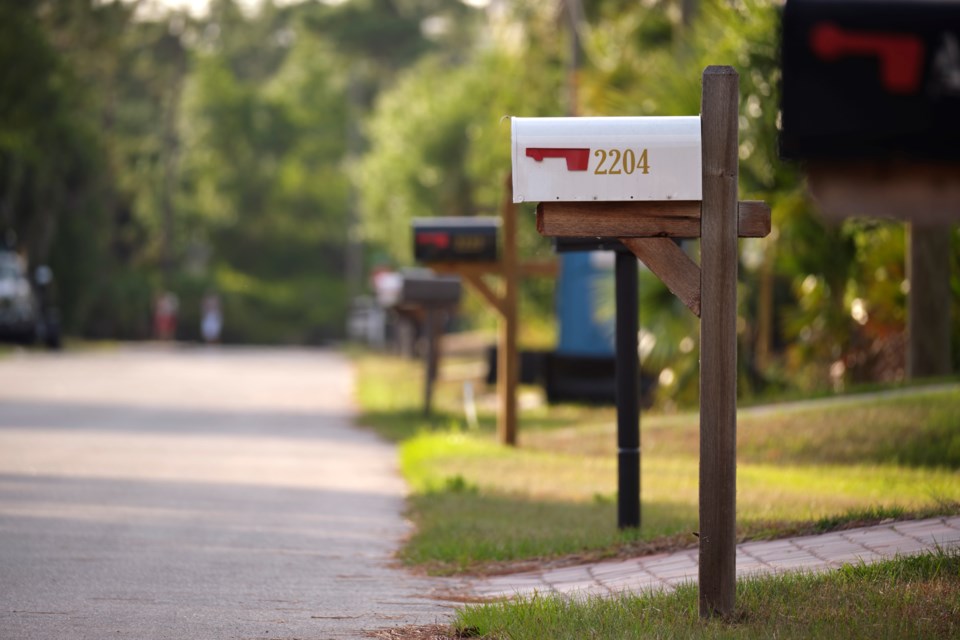In 2023, the Casper Creek Fire, burning 24 kilometres west of Lillooet, highlighted a critical hurdle for emergency services; a lack of posted addresses meant some residents could not be found by first responders looking to share evacuation orders in a timely fashion.
“These delays, should the situation have been more urgent, would have put public and first responder safety in question,” according to a report presented to the SLRD.
“Some houses have very clear numbers displayed, and others don’t,” noted Area C Director Russell Mack during a Feb. 12 Squamish-Lillooet Regional District (SLRD) Electoral Area Directors (EAD) meeting.
“I suspect that most homeowners are not thinking about the emergency services part of it. It’s kind of, ‘It’s a small community, everyone knows where I live.’ But not even everyone in the community knows that, let alone emergency services.”
That’s a problem the SLRD is currently working to ameliorate with a civic addressing push throughout the area.
Per an SLRD civic addressing bylaw, “the regional district is responsible for assigning civic addresses to all homes and businesses, as well as vacant parcels if requested, in the four electoral areas.”
Following the installation of 30 signs in communities along the Highline Road in August 2024, staff are preparing to procure adequate signage for the rest of the region. The project only addresses non-vacant, private residential properties. Non-residential properties, like farms, schools, and churches, are not included in the addressing endeavour.
Preliminary estimates suggest the SLRD will need to procure signs for up to 1,888 non-vacant parcels of land. Considering the time, labour and materials required, the SLRD estimates $250 per property for a total of $472,000.
A report by staff at the February EAD meeting laid out some stipulations to the $472,000 figure.
“We do not know how many properties have installed their own signage,” said Claire Dewar, senior planner with the SLRD. “If we’re looking at the potential to cover all the properties in the SLRD, there is a benefit to having consistent signage.”
The report stipulates the $472,500 figure “assumes no properties have addresses displayed. It is likely less, but at this time, without a full onsite audit of the SLRD, there is no way to confirm which properties with civic addresses have signs installed.”
The 1,888-parcel figure also excludes master-planned communities, namely, Furry Creek, Britannia Beach, Pinecrest, Black Tusk, WedgeWoods and Owl Ridge which are more likely to have their own adequate posted signage.
During an April 9 EAD meeting, SLRD planner Anna Koterniak again noted that “building inspectors have advised it is primarily Electoral Area B where civic address signage is missing,” she said.
“Assuming that every single non-vacant residential property in Area B requires an address there will be just 332 properties so this is an important consideration for today, accounting for just over a fifth of the total non-vacant private residential properties.”
Area B Director Vivian Birch-Jones expressed enthusiasm for the addressing project.
“Of course I would like to do this in Area B,” she told the EAD. “I do know there are a few pockets in B that are badly signed, [and] for the most part we could do a lot better with civic signage.”
Area A was also singled out as likely needing significant new address signage. The Area's director Sal DeMare touted the program as a benefit to rural areas—particularly in combination with the installation of next-generation 911 (NG9-1-1) systems the region is pursuing.
“I’ve seen it before where not having addresses has delayed help,” DeMare told the EAD. “I think with NG9-1-1 [in combination] with these signs, we’re gonna be in a better place. So I would like staff to research grant funding for a project like this.”
As for funding, directors pointed to the Union of British Columbia Municipalities’ disaster risk reduction-climate adaptation grant program as a potential avenue to move forward, as well as community works funds.
But first, they motioned to have staff prioritize a review of the signage needs of Area B and A—in that order, Jones-Birch stressed.
The next EAD meeting will be held May 14 at 10:30 a.m. A full schedule of SLRD meetings is available on their website. Meetings are also live-streamed and posted on their YouTube page.





